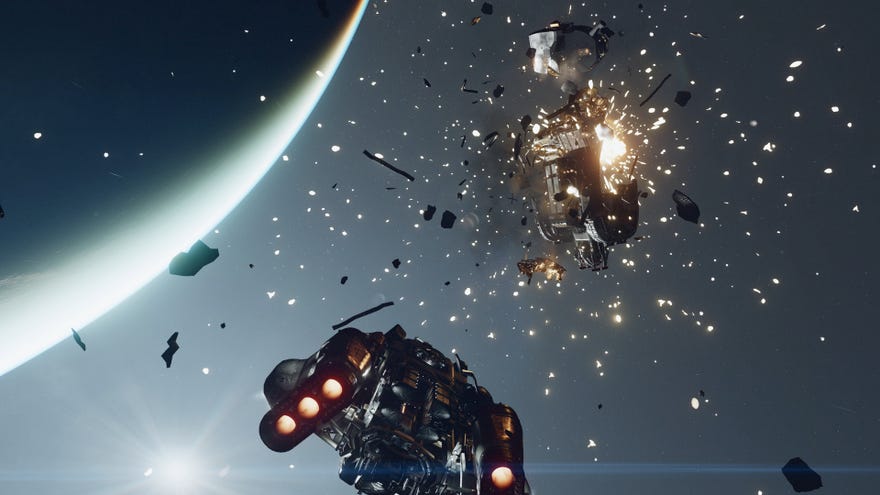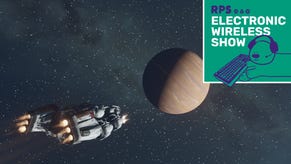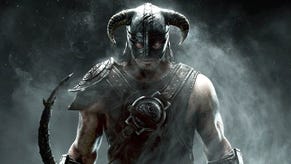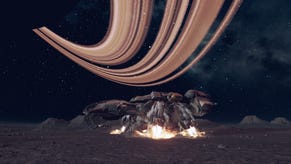Starfield’s multiple ideas of time have fans asking about black holes
And Todd Howard is being a tease about it
I've been bolting together some ideas for a longer Starfield feature and while plying the sliplanes of Reddit, stumbled on this conversation about the game's handling of time. As many of you will know/be very weary of hearing, Starfield features hundreds of planets, together with moons and space stations, scattered around the galaxy in different solar systems. Real-life planets, of course, aren't fixed points: they rotate and orbit their stars at different speeds, depending on their mass and distance, which means that days, nights and seasons have different durations.
Starfield appears to model this to some degree. Bethesda's Starfield Direct from June makes a fleeting distinction (thanks, JuiceHead33) between "local time", corresponding to where you land on a planet's surface, and "UT", which sounds like an abbreviation of "universal time", and presumably describes the passage of time throughout the wider galaxy. Both are displayed in 24 hour format. You can explore planet locations at different local times, as indicated by your fancy neo-Casio watch, with shifting lighting conditions that seem to correspond to the spinning of the planet around its sun. There's footage showing one particular area, The Hitching Post in Akila City, by day and night. The game also seems to model planetary alignments - there's the beginnings of a solar eclipse visible during one segment of the video.
All of which conjures up a host of possibilities, little and large - or rather, large and larger. First off, there's the question of whether planetary days and nights have different lengths. Does 24 hours on one world equal 24 hours on another? If I'm carrying out a nocturnal raid on an outpost or somesuch on a smaller, rapidly spinning planet, do I have to worry about the sun rising abruptly and breaking my cover? And what about planets that are tidally locked, whereby the world's rotation and its orbit synch so that one hemisphere is always roasting in the glare of the star, while the other freezes in darkness?
It's unclear how closely Starfield adheres to current astrophysical models in its representation of celestial bodies. The game isn't some nitty-gritty work of realistic physics, a la Kerbal Space Program - sound travels in a vacuum in Starfield, and well, the game has space magic. Nor does its portrayal of celestial mechanics appear to be as whimsically elaborate as, say, that of Outer Wilds, where comets melt as they near the sun and binary planets suck matter from each other. But Starfield does take some inspiration from "hard" science - Bethesda sought input from SpaceX on certain questions, as detailed in this interview with IGN, where Howard ducks and dives around the topic of realism. Speaking to Kinda Funny, he also noted that the game's warp drive equivalent, the "space-folding" Graviton Loop Field Array, has precedents in real-world papers on quantum physics.
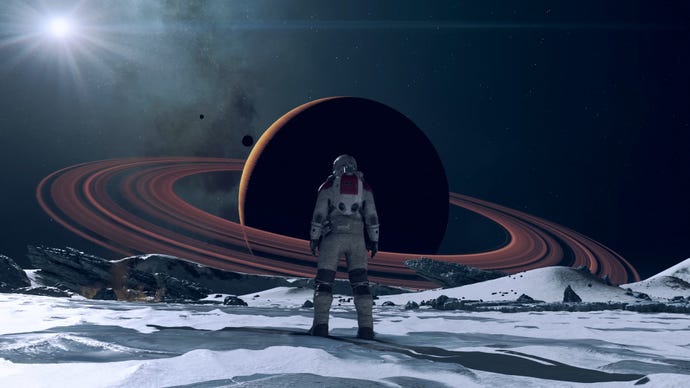
The biggest can of worms of all is relativity, which I'm going to very crudely summarise as the theory that time doesn't unfold in an absolute, unchanging way, regardless of circumstances, but acts differently from the perspective of the observer depending on things like gravity and relative motion. The local/UT distinction might sound like a pretty straightforward division for the sake of practicality, but the idea that time is different depending on where you are in Starfield's galaxy could be the basis for relativistic effects like time dilation, whereby clocks desynchronise because, for example, one is on a huge massy planet, while the other is on a nimble spaceship. We know that celestial bodies have different gravity levels, and I'm intrigued to know whether this affects the local implementation of temporality.
If relativity is in the mix somehow, it raises the juicy prospect of black holes, whereby light and time collapse inward endlessly under the force of gravity. There is a lot of Reddit speculation about this, much of it kindled by Howard's teasing "I'm gonna pass on the question" when pressed by Kinda Funny. I wouldn't be surprised if dark stars played some kind of role in Starfield's story.

Starfield having divergent timeframes has other, less physicky implications. The game's worldbuilding and story are laced with references to colonialism and empire - going by what I've read of Starfield's factions, the whole thing is sort of a re-imagining of North America's settlement and the US civil war, with organisations that compare to the Union and the Confederacy, plus an organisation of wide-eyed pioneers, Constellation, who just want to see what's over yonder horizon. The modelling and standardising of time across different regions was crucial to the prospering of European empires - amongst other things, it allowed for precise navigation at sea. I'd love to play a Starfield quest that digs into this complicated subject. But if all else fails, I'll be happy with at least one black hole.
